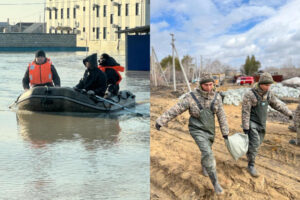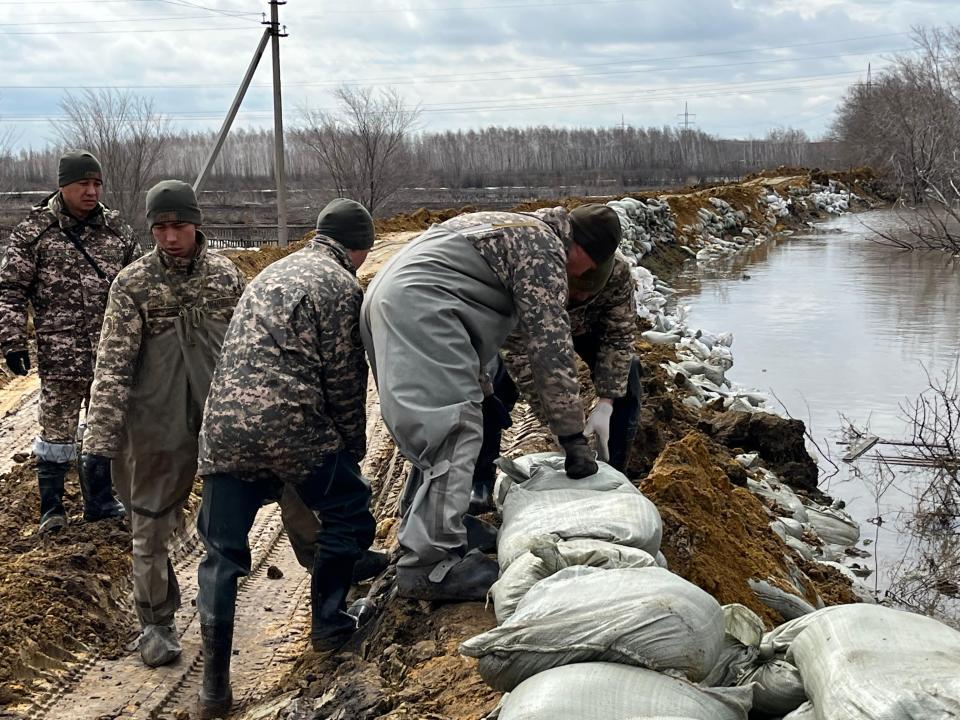ASTANA: According to the latest data from the Ministry of Emergency Situations, over 96,472 people, including 31,640 children, have been rescued and evacuated since the beginning of the floods. This was announced by Saipash Erasyl, a senior officer of the Civil Defense and Military Units Committee, during an April 10 briefing at the Central Communications Service.
Nearly 7,605 people, including 3,474 children, are staying in temporary accommodation centers, and 82,559 farm animals were driven away to safe areas.
Some 167,935 kilograms of humanitarian aid was delivered to the affected regions. More than 8.5 million cubic meters of meltwater were pumped out, and around 1.3 million bags and 1.1 million tons of inert material were laid.
Water has been diverted from 2,750 residential buildings and 1,816 courtyard areas. Rescue efforts involve 24,295 people, 2,655 pieces of equipment, 469 water pumping equipment, 139 watercraft and 10 aircraft.

Today, 3,444 private residential buildings and 336 courtyard areas in five regions remain flooded: Atyrau, Aktobe, Akmola, Kostanai, and North Kazakhstan Regions.
Some 97 road surfaces and eight bridges are among the 105 road erosions that are under control and 69 settlements have no access to transportation.
Hydrometeorological Service forecast
According to data from the Kazhydromet National Hydrometeorological Service on April 10, unstable, rainy weather remains in most parts of Kazakhstan. The weather without precipitation is expected only in the southwest and south of the country. Fog and strong wind are expected across Kazakhstan and thunderstorms in the west and southeast.
Current situation in regions
The Zhem River is experiencing a drop in water level in the Atyrau Region. The population is still receiving help and efforts to remove melted water are ongoing.
Work continues to drain melt water from flooded areas in the Akmola and North Kazakhstan Region.
Bank protection work continues on the Ural River in the West Kazakhstan Region.
The flood situation has stabilized in the Kostanai Region. The release of water at the main reservoirs in the region has slowed down.


